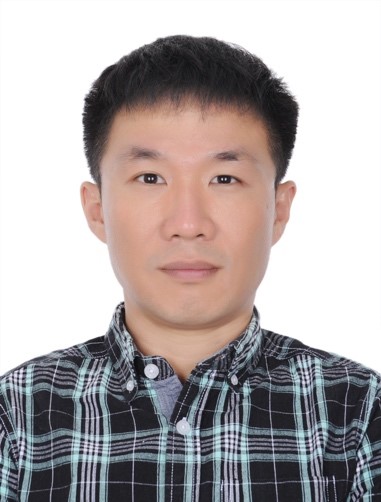
副研究员
联系邮箱: j.yu@szu.edu.cn
通讯地址:深圳大学南校区L4理工楼201-2办公室
教育背景:
2014,帝国理工学院,生命科学,博士
2007,帝国理工学院,生命科学,硕士
2006,诺丁汉大学,生命科学,学士
工作经历:
2014.01—2019.12,帝国理工学院,博士后
2009.06—2013.12,帝国理工学院,研究助理
研究兴趣:
光合作用分子机制探索,及微藻生物工程应用。
1. 光合作用光反应原理与蛋白进化研究
光合作用是地球生物圈赖以为继的基础生化反应。在亿万年的进化过程中,光合作用利用阳光将二氧化碳固定为有机物质,而光合作用的副产品氧气则是依赖有氧呼吸生物的生命基石。然而随着地球大气成分中的二氧化碳浓度从最初的20%以上下降至目前的不到0.1%,光合作用也由于氧气的抑制作用导致效率显著下降。由于光合作用通量关乎地球生物圈有机物总量,是决定地球生物圈边际的根本因素;因而光合作用效率是否具有提升空间,光合蛋白是否具备改良前景是我所关注的核心问题。在过去的研究中,我们对光合作用的核心蛋白-光系统II进行了大量分子及生化研究,并成功揭示了光系统II组装蛋白对光合作用效率的影响。同时我们也进行了一系列组装蛋白的晶体结构测定,并揭示了其中一些蛋白的分子及调控机制。目前我的工作集中在光系统II和光系统I蛋白的进化领域研究,通过分析不同生物中该蛋白的分子差异建立相关蛋白进化树。该研究有助于了解光合作用蛋白在不同环境中的进化优势,为可能实现的人工设计高效光合蛋白打下基础。
2. 微藻生物工程应用
微藻是单细胞光合生物,由于一些微藻具有生长速度快,蛋白结构稳定等优点,微藻被广泛作为实验对象应用于光合作用理论研究。然而微藻资源的产业化开发正处在一个相对尴尬的局面。微藻虽然生长迅速,并富含抗氧化剂、色素等产物,但是其采收通常需要对生物质进行过滤或絮凝,因此采收成本极高,严重削弱了微藻产品的盈利空间和产能。如何高密度,规模化培养是克服该产业问题的重要途径之一。我目前在研发利用透析技术高密度培养微藻的方法,目标优化高密度自养微藻所需的环境参数,最终实现低成本采收微藻的工艺定型。
发表论文:
1. Yu, J.*, Knoppová, J., Michoux, F., Bialek, W., Cota, E., Shukla, M. K., Strašková, A., Pascual Aznar, G., Sobotka, R., Komenda, J., Murray, J. W., and Nixon, P. J.* (2018) Ycf48 involved in the biogenesis of the oxygen-evolving photosystem II complex is a seven-bladed beta-propeller protein. Proc. Natl. Acad. Sci. 115, E7824–E7833
2. Bec̆ková, M., Yu, J., Krynická, V., Kozlo, A., Shao, S., Koník, P., Komenda, J., Murray, J. W., and Nixon, P. J. (2017) Structure of Psb29/Thf1 and its association with the FtsH protease complex involved in photosystem II repair in cyanobacteria. Philos. Trans. R. Soc. B Biol. Sci. 372, 20160394
3. Bečková, M., Gardian, Z., Yu, J., Konik, P., Nixon, P. J., Komenda, J., Koník, P., Nixon, P. J., and Komenda, J. (2017) Association of Psb28 and Psb27 proteins with PSII-PSI supercomplexes upon exposure of Synechocystis sp. PCC 6803 to high light. Mol. Plant. 10, 62–72
4. Knoppová, J., Yu, J., Konik, P., Nixon, P. J., and Komenda, J. (2016) CyanoP is involved in the early steps of photosystem II assembly in the cyanobacterium Synechocystis sp. PCC 6803. Plant Cell Physiol. 57, 1921–1931
5. Sacharz, J., Bryan, S. J., Yu, J., Burroughs, N. J., Spence, E. M., Nixon, P. J., and Mullineaux, C. W. (2015) Sub-cellular location of FtsH proteases in the cyanobacterium Synechocystis sp: PCC 6803 suggests localised PSII repair zones in the thylakoid membranes. Mol. Microbiol. 96, 448–462
6. Bryan, S. J., Burroughs, N. J., Shevela, D., Yu, J., Rupprecht, E., Liu, L. N., Mastroianni, G., Xue, Q., Llorente-Garcia, I., Leake, M. C., Eichacker, L. A., Schneider, D., Nixon, P. J., and Mullineaux, C. W. (2014) Localisation and interactions of the Vipp1 protein in cyanobacteria. Mol. Microbiol. 94, 1179–1195
7. Krynická, V., Tichý, M., Krafl, J., Yu, J., Kaňa, R., Boehm, M., Nixon, P. J., and Komenda, J. (2014) Two essential FtsH proteases control the level of the Fur repressor during iron deficiency in the cyanobacterium Synechocystis sp. PCC 6803. Mol. Microbiol. 94, 609–624
8. Shinopoulos, K. E., Yu, J., Nixon, P. J., and Brudvig, G. W. (2014) Using site-directed mutagenesis to probe the role of the D2 carotenoid in the secondary electron-transfer pathway of photosystem II. Photosynth. Res. 120, 141–152
9. Knoppová, J., Sobotka, R., Tichy, M., Yu, J., Konik, P., Halada, P., Nixon, P. J., Komenda, J., (2014) Discovery of a chlorophyll binding protein complex involved in the early steps of photosystem II assembly in Synechocystis. Plant Cell. 26, 1200–1212
10. Burroughs, N. J., Boehm, M., Eckert, C., Mastroianni, G., Spence, E. M., Yu, J., Nixon, P. J., Appel, J., Mullineaux, C. W., and Bryan, S. J. (2014) Solar powered biohydrogen production requires specific localization of the hydrogenase. Energy Environ. Sci. 7, 3791–3800
11. Suzuki, H., Yu, J., Kobayashi, T., Nakanishi, H., Nixon, P. J., and Noguchi, T. (2013) Functional roles of D2-Lys317 and the interacting chloride ion in the water oxidation reaction of photosystem II as revealed by fourier transform infrared analysis. Biochemistry. 52, 4748–4757
12. Boehm, M., Yu, J., Reisinger, V., Beckova, M., Eichacker, L. A., Schlodder, E., Komenda, J., and Nixon, P. J. (2012) Subunit composition of CP43-less photosystem II complexes of Synechocystis sp. PCC 6803: implications for the assembly and repair of photosystem II. Philos. Trans. R. Soc. B Biol. Sci. 367, 3444–3454
13. Boehm, M., Yu, J., Krynicka, V., Barker, M., Tichy, M., Komenda, J., Nixon, P. J., and Nield, J. (2012) Subunit organization of a Synechocystis hetero-oligomeric thylakoid FtsH complex involved in photosystem II repair. Plant Cell. 24, 3669–3683
14. Liu, L. N., Bryan, S. J., Huang, F., Yu, J., Nixon, P. J., Rich, P. R., and Mullineaux, C. W. (2012) Control of electron transport routes through redox-regulated redistribution of respiratory complexes. Proc. Natl. Acad. Sci. 109, 11431–11436
15. Komenda, J., Knoppova, J., Kopecna, J., Sobotka, R., Halada, P., Yu, J., Nickelsen, J., Boehm, M., and Nixon, P. J. (2012) The Psb27 assembly factor binds to the CP43 complex of photosystem II in the cyanobacterium Synechocystis sp. PCC 6803. Plant Physiol. 158, 476–486
16. Boehm, M., Romero, E., Reisinger, V., Yu, J., Komenda, J., Eichacker, L. A., Dekker, J. P., and Nixon, P. J. (2011) Investigating the early stages of photosystem II assembly in Synechocystis sp. PCC 6803: isolation of CP47 and CP43 complexes. J. Biol. Chem. 286, 14812–14819
17. Nixon, P. J., Michoux, F., Yu, J., Boehm, M., and Komenda, J. (2010) Recent advances in understanding the assembly and repair of photosystem II. Ann. Bot. 106, 1–16
